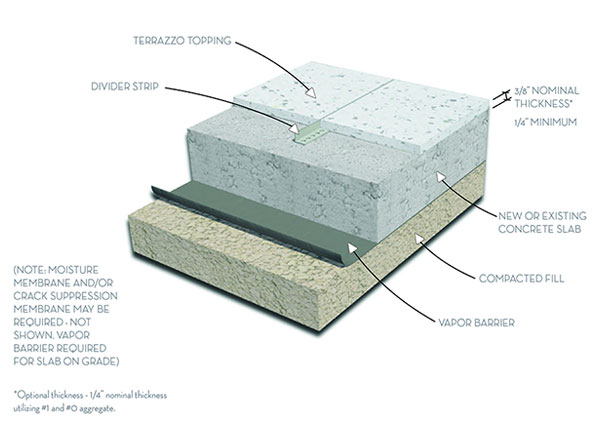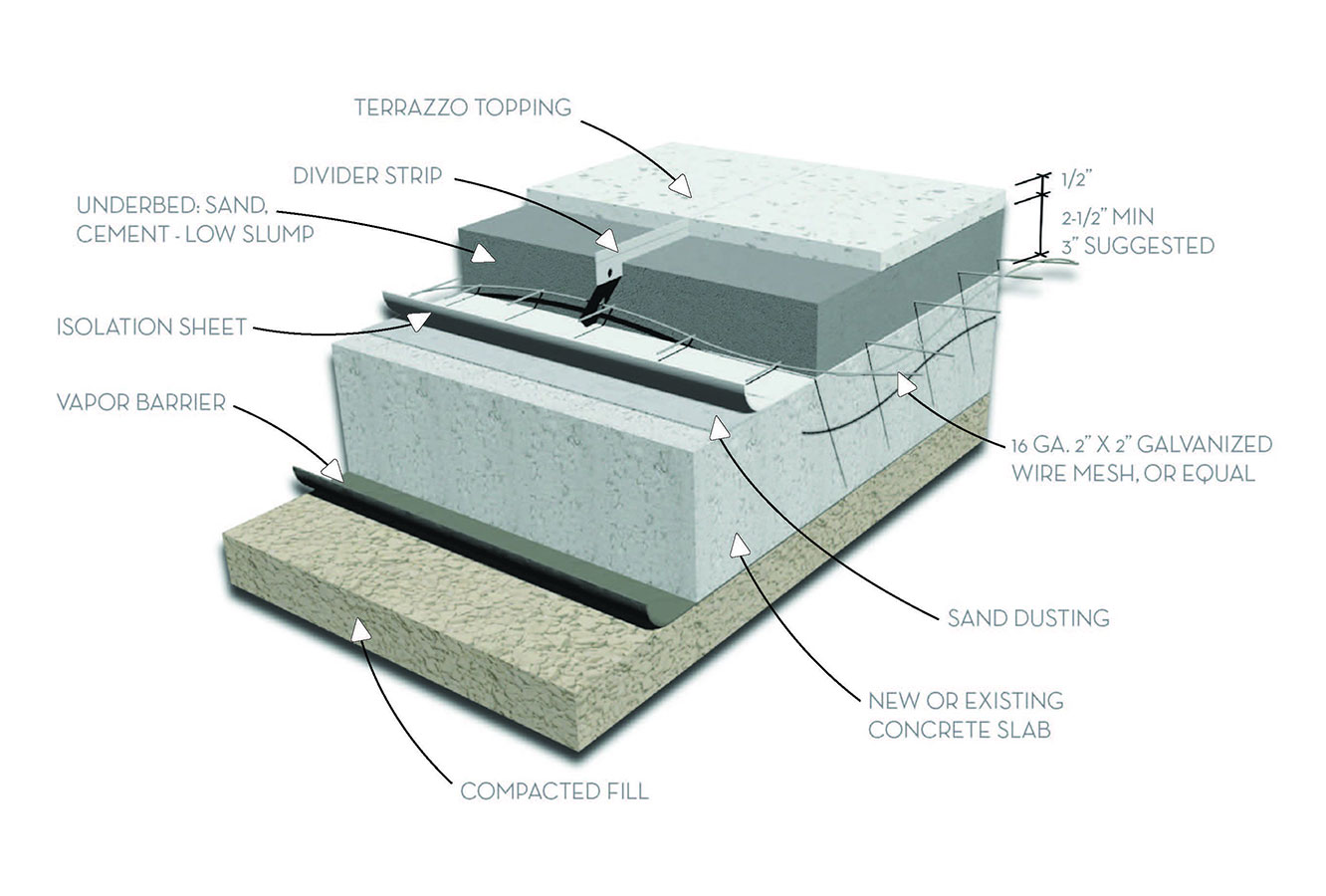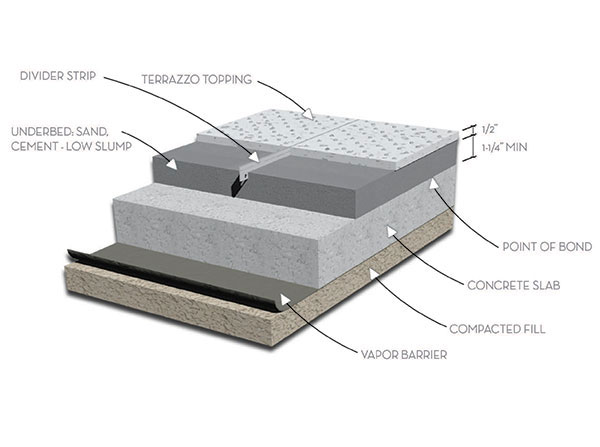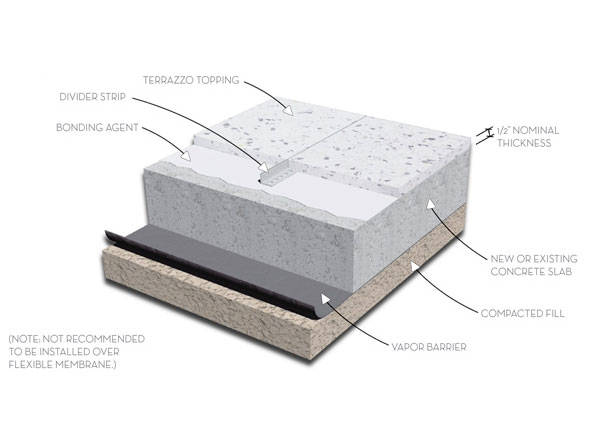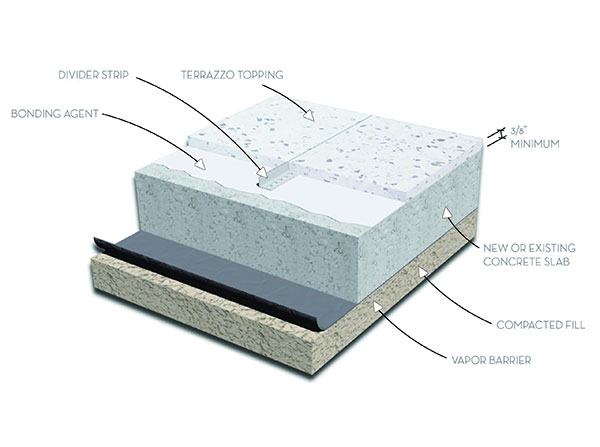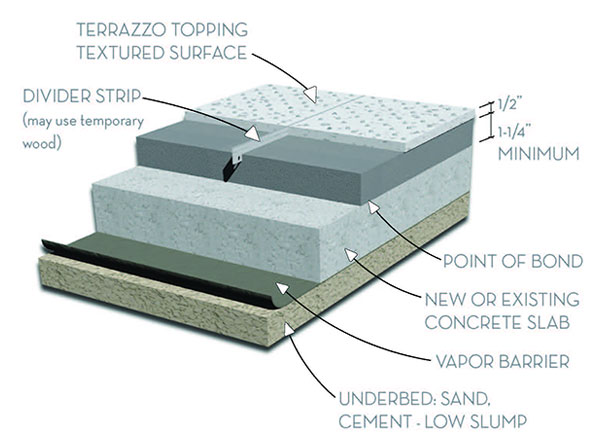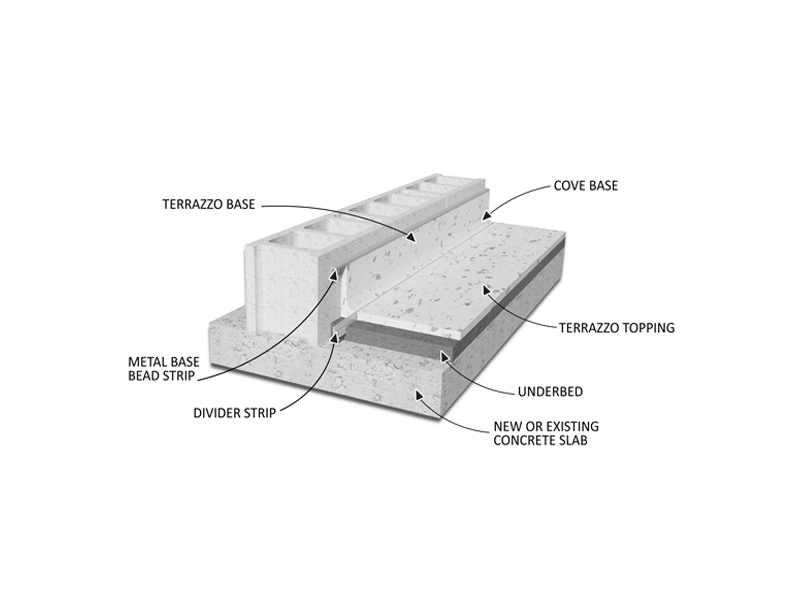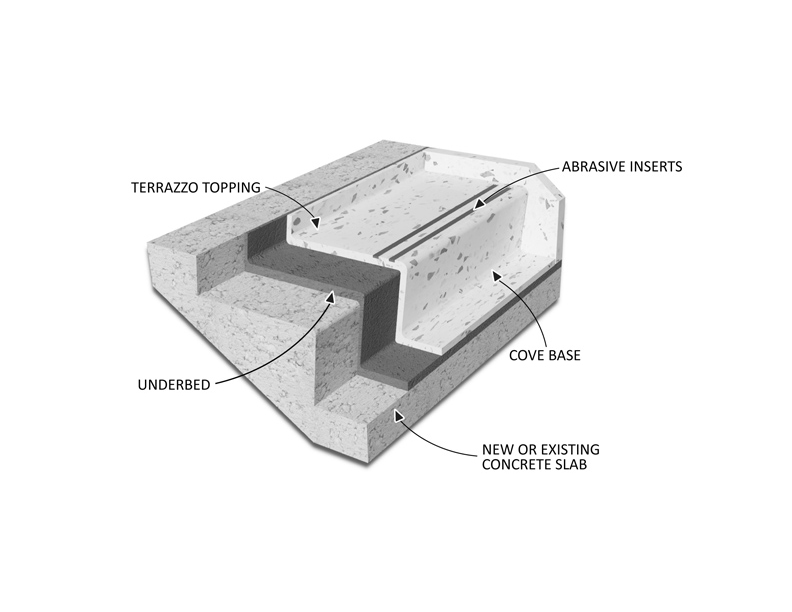Terrazzo Systems
- Epoxy / Resin Terrazzo
- Sand Cushion Portland Cement Terrazzo
- Bonded Portland Cement Terrazzo
- Rustic / Washed Portland Cement Terrazzo
- Polyacrylate Modified Cement Terrazzo
Considerations for Terrazzo System Selection
- Does the terrazzo system need to be breathable if installation is slab on grade over an existing concrete slab which may not have an effective moisture vapor barrier?
- Is there a terrazzo system thickness constraint, as systems range from 3/8" to 2 1/2" and typically require a depressed subfloor for systems greater than 1/2"?
- If terrazzo is being proposed for an upper level of a structure, is there a weight restriction?
- The proposed matrix colors may be a factor in selecting a terrazzo system.
- Use of glass, plastic, or metal aggregate will be a factor in selecting a terrazzo system.
- Metal divider strip design and terrazzo panel sizes may determine which terrazzo system to use.
- Time constraints for installation of terrazzo system may be a factor in system selection.
- Washing terrazzo for non-slip finish is a factor in terrazzo system selection.
Terrazzo Matrix Colors
Terrazzo Aggregates
Though glass chips may be used in Epoxy Resin and Polyacrylate systems, it is not recommended in cement matrix systems. Metal chips and shell are also commonly used in Thin-set Epoxy Matrix Terrazzo.
Terrazzo Marble Chip Size
As with colors, marble chip sizes can be combined to create variations in the appearance of the Terrazzo. Terrazzo chip sizes have limitations based on the type of Terrazzo systems being used. (See Allowances For Terrazzo Finish below).
Terrazzo Divider Strip Layout / Patterns
Interior / Exterior Terrazzo
After grinding and before final polishing and sealing, a mild acid solution is applied that will dissolve the Portland Cement matrix until neutralized. This process leaves a slight depression in the matrix causing the marble chip surface to protrude slightly and provide the added slip-resistance. Upon final sealing, the Terrazzo appearance is similar to polished Terrazzo without high gloss.
Allowance for Terrazzo Finish
- Exterior Sand Cushion / Venetian Terrazzo 2 1/2" (30 lbs./sq.ft.)
- Exterior Bonded Acid Washed Terrazzo 2" (20 lbs./sq.ft.)
- Interior/Exterior Polyacrylate Terrazzo 1/2" (3 lbs./sq.ft.)
- Interior Epoxy Resin Terrazzo 3/8" (3 lbs./sq.ft.)
Terrazzo Type Advantages and Disadvantages
- System thickness of 3/8" total, can be used over concrete or wood substrate
- Virtually unlimited range of vibrant colors available
- Glass chips can be used in epoxy resin Terrazzo
- Design flexibility due to minimal divider strip requirements
- Accelerated chemical cure allows for faster installation due to significantly decreased cure time prior to grinding
- Color uniformity on large installations due to sophisticated manufacturing process for resin
- Most cost effective system for interior use
- 3/8" total thickness requires high flatness tolerance of 1/4" per 10 sq.ft. in the substrate.
- Not recommended for exterior use.
- System not breathable, moisture vapor transmission barrier may be required for slab on grade applications.
- Maximum chip size that can be used is #2.
Sand Cushion
Bonded Acid Washed Terrazzo:
- Can be used for interior or exterior use
- Can be acid washed for added slip resistance in exterior use
- Topping thickness will accommodate the largest (#7) chip size
- Is breathable and not affected by moisture vapor transmission
- Sand Cushion system can accommodate substrate defects
- Requires minimum 2" depression for system installation
- Vibrant colors are very limited with Portland Cement
- Glass chips have limited use in Portland Cement
- Design flexibility due to size of panel limitations
- Lengthy cure time to achieve final appearance
- System thickness of 1/2" total, can be used over wood substrate.
- Glass chips can be used in polyacrylate matrix Terrazzo.
- Can be used for exterior applications.
- System is breathable and not affected by moisture vapor transmission.
- Can be acid-washed for added slip resistance in exterior applications
- 1/2" total thickness requires high flatness tolerance of 1/4" per 10 sq.ft. in the substrate.
- The most vibrant colors cannot be achieved with polyacrylate matrix.
- Maximum chip size that can be used is #2
Epoxy / Resin Terrazzo
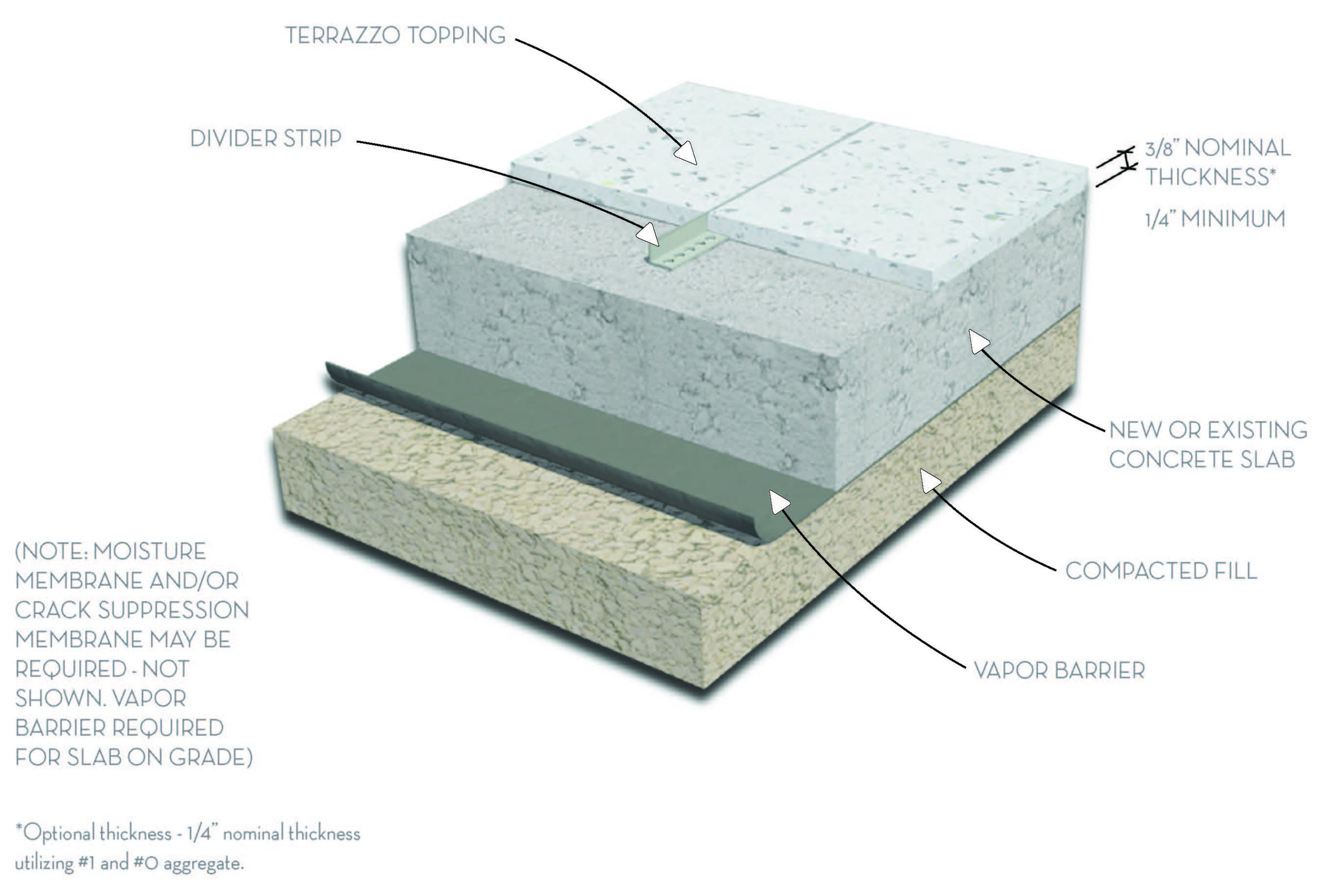
EPOXY TERRAZZO DOWNLOADS:
Word Doc - Epoxy-Venetian Terrazzo-without-LEED
PDF - Epoxy-Venetian Terrazzo-without-LEED
Epoxy Terrazzo Advantages:
Thickness: Nominal 1/4" or 3/8" Epoxy Terrazzo topping. 0-1 chip sizes opt.#2 chip for 3/8".
Weight: 3-4 lbs. PSF.
Dividers:
In addition other dividers can be set to separate colors or as an accent themselves. In these systems the dividers not located over concrete joints are strictly decorative. They do not function as leveling devices or crack preventers.
Dividers vary in width from 18 gauge to 1/2 inch. 16 gauge or 1.8 inch are standards. Zinc is standard but brass and colored plastic are readily available.
Architects should design structural inset expansion plates between areas where major movement is anticipated.
Sand Cushion Terrazzo
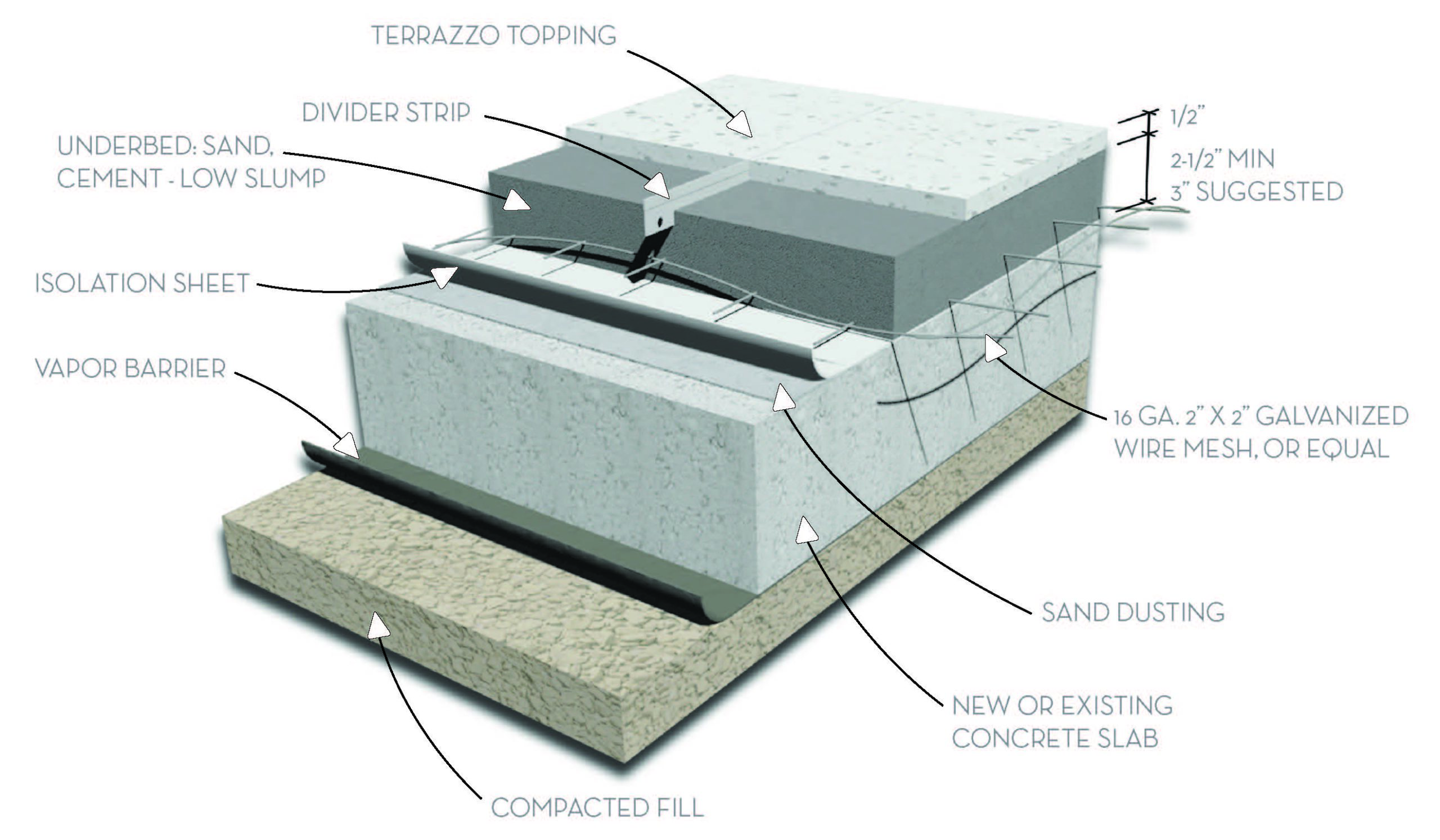
SANDCUSHION TERRAZZO DOWNLOADS:
Sandcushion Terrazzo Advantages:
Thickness: 2.5" to 3" including a .5" terrazzo topping.
Weight: 25-30 lbs. PSF.
Dividers:
Architects should design structural inset expansion plates between areas where major movement is anticipated.
Bonded Terrazzo
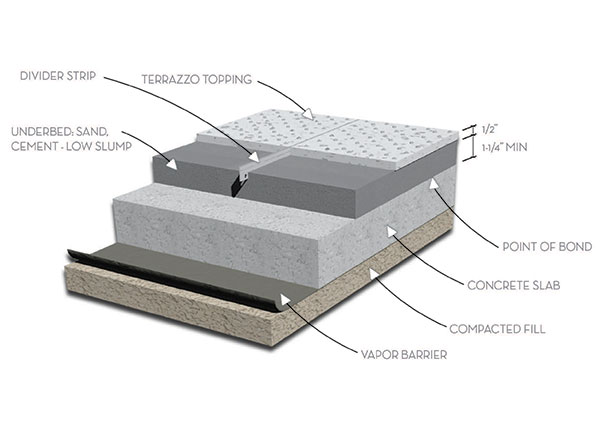
BONDED TERRAZZO DOWNLOADS:
Bonded Terrazzo Advantages:
Thickness: 1.75" to 2.25" including .5" terrazzo topping.
Weight: 18-22 lbs. PSF.
Dividers:
In addition other dividers can be set to separate colors or as an accent themselves. In these systems the dividers not located over concrete joints are strictly decorative. They do not function as leveling devices or crack preventers.
Dividers vary in width from 18 gauge to 1/2 inch. 16 gauge or 1.8 inch are standards. Zinc is standard but brass and colored plastic are readily available.
Architects should design structural inset expansion plates between areas where major movement is anticipated.
Monolithic Terrazzo
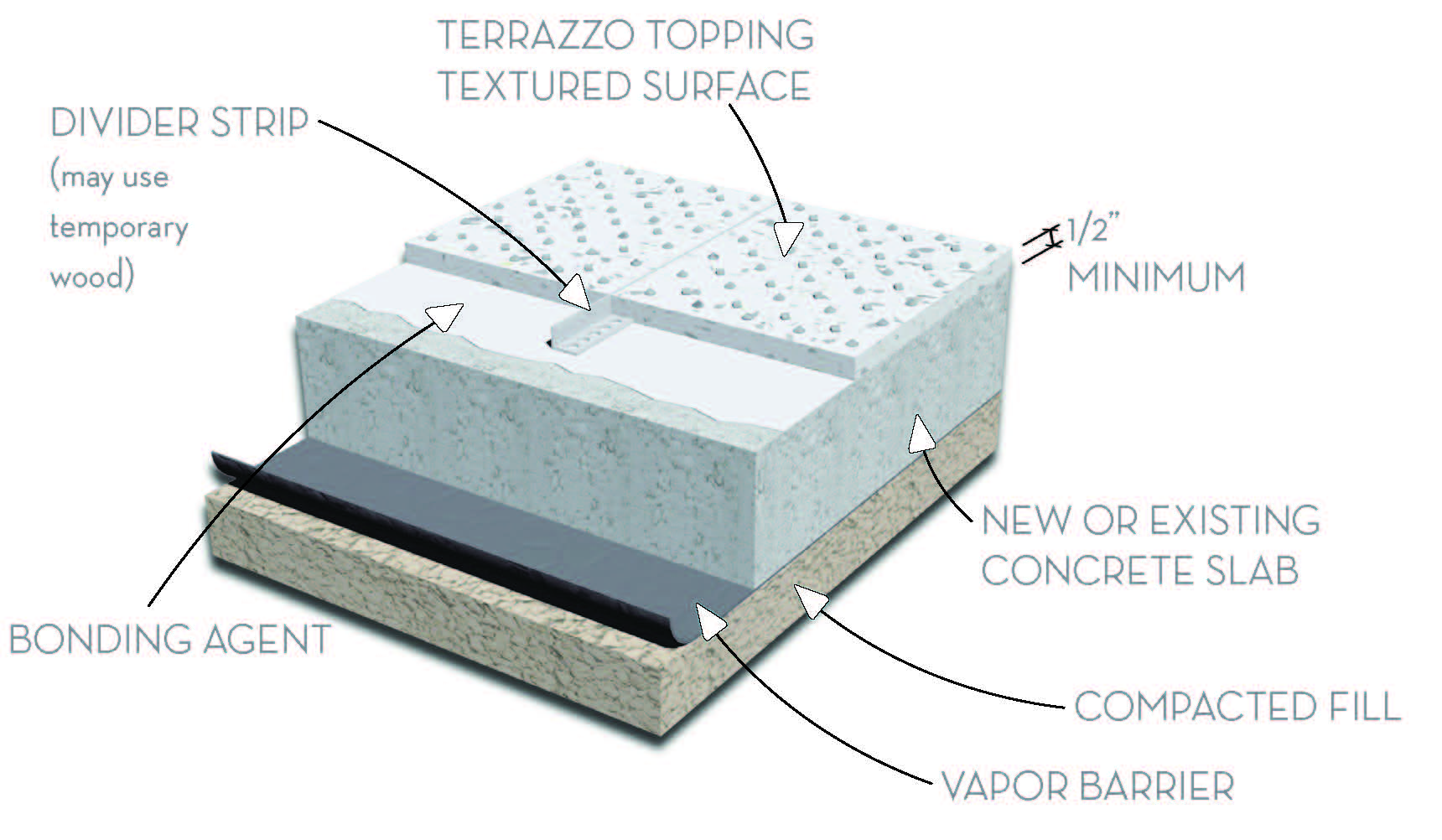
MONOLITHIC TERRAZZO DOWNLOADS:
Monolithic Terrazzo Advantages:
Thickness: 1/2" Terrazzo topping
Weight: 5-7 lbs. PSF.
Dividers:
In addition other dividers can be set to separate colors or as an accent themselves. In these systems the dividers not located over concrete joints are strictly decorative. They do not function as leveling devices or crack preventers.
Dividers vary in width from 18 gauge to 1/2 inch. 16 gauge or 1.8 inch are standards. Zinc is standard but brass and colored plastic are readily available.
Architects should design structural inset expansion plates between areas where major movement is anticipated.
Polyacrylate Terrazzo
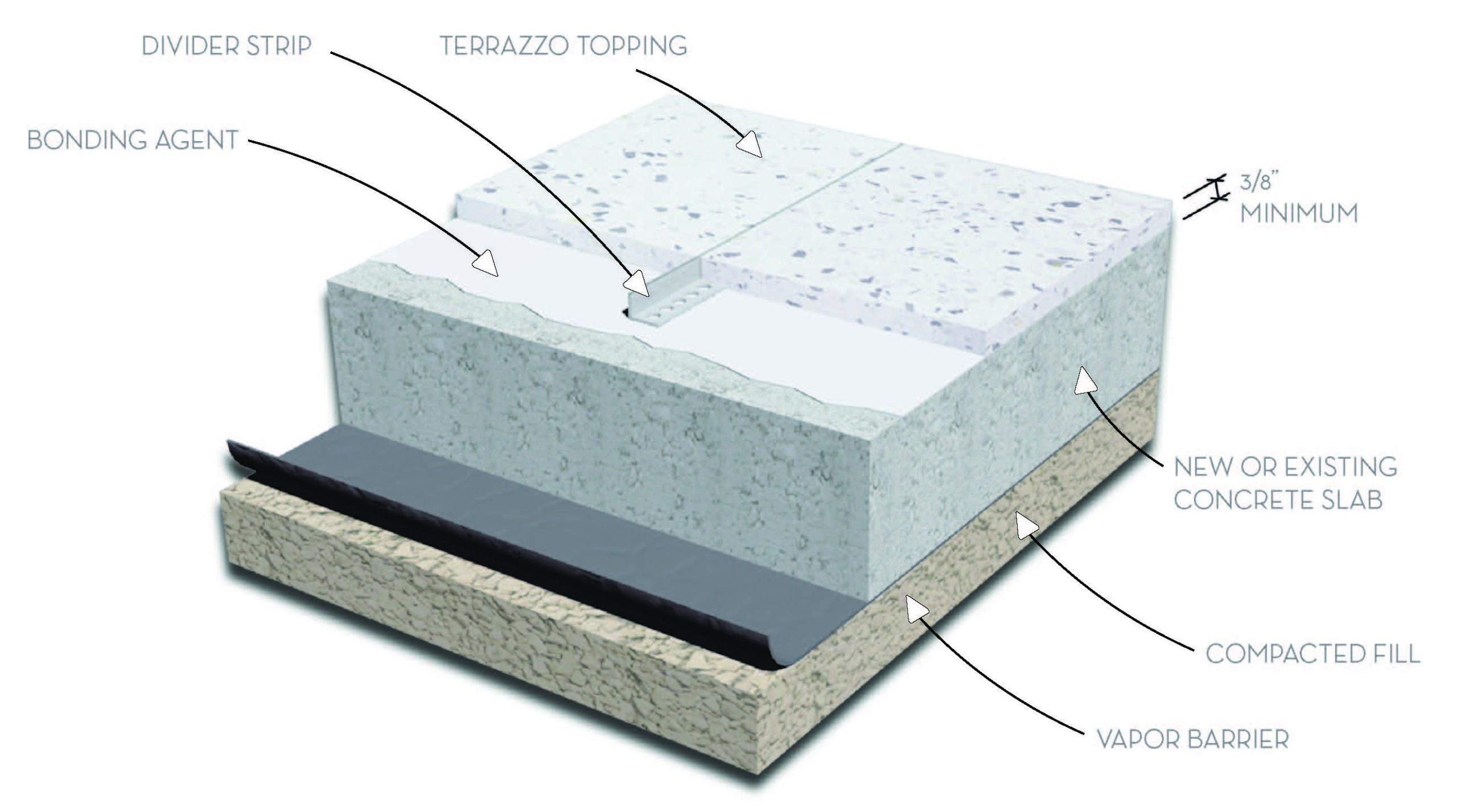
POLYACRYLATE TERRAZZO DOWNLOADS:
Polyacrylate Terrazzo Advantages:
Thickness: Nominal 3/8" polyacrylate with terrazzo topping. Chip sizes 0,1 and 2.
Weight: 4.5 lbs. PSF.
Dividers:
Architects should design structural inset expansion plates between areas where major movement is anticipated.
Rustic / Exterior Terrazzo
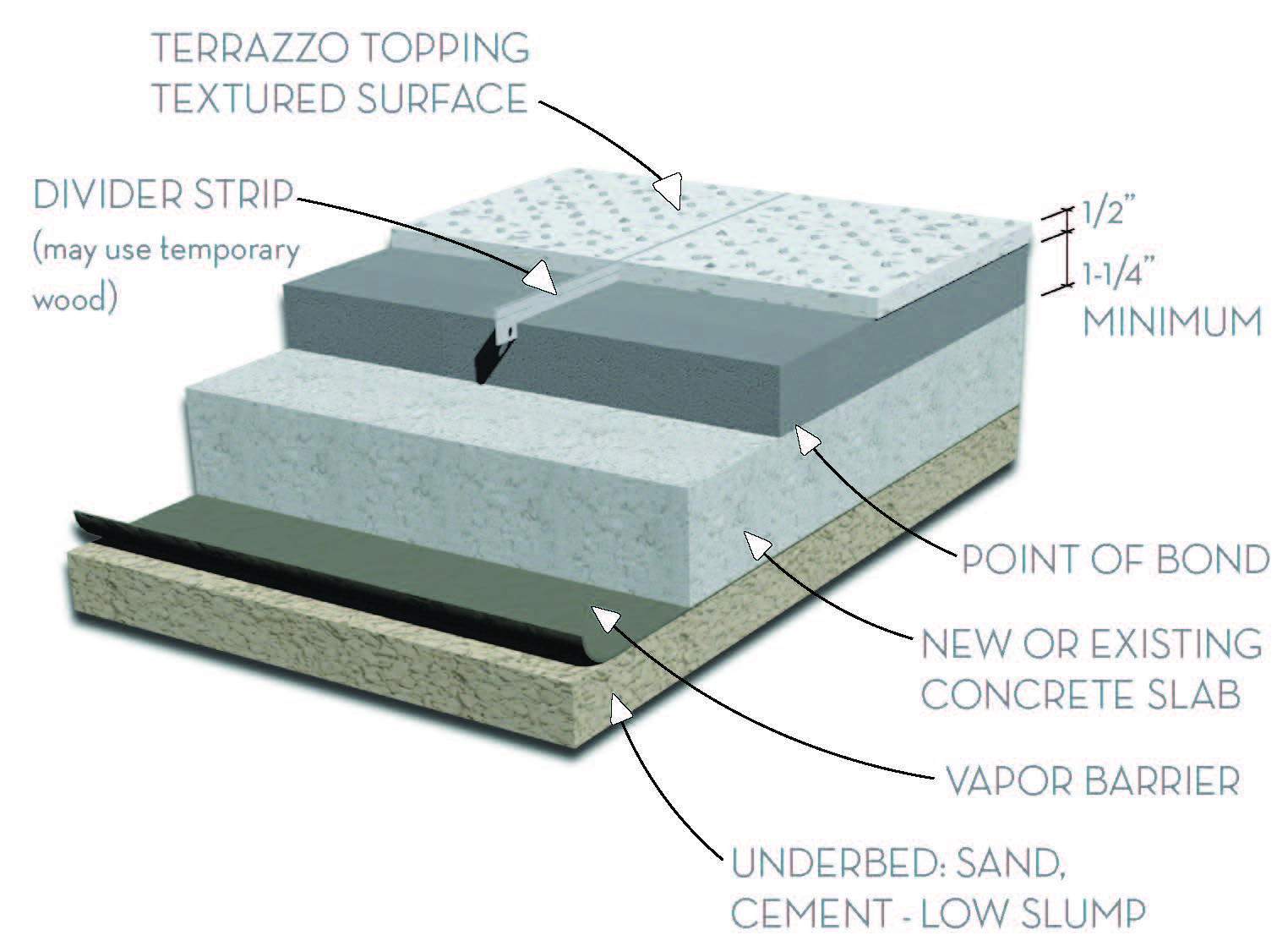
RUSTIC TERRAZZO DOWNLOADS:
Rustic Terrazzo Advantages:
Thickness: Bonded 1.75" to 2" including a .5" terrazzo topping. Monolithic .5" terrazzo topping.
Weight: Dependent on system selected.
Dividers:
Restoration of Terrazzo
Terrazzo floors are either a cement or epoxy matrix (binder) with a variety of aggregates. Color matching existing aggregates in floors may not be exact, as these are mined products and may alter over time. A meeting to clarify the extent of repairs and expectations is recommended. This includes mapping out cracks and clarifying various repair options. Once mock-ups are approved, expectations should be better understood. It may be necessary for the contractor to reevaluate conditions once substrates are uncovered, or unknown conditions arise.


